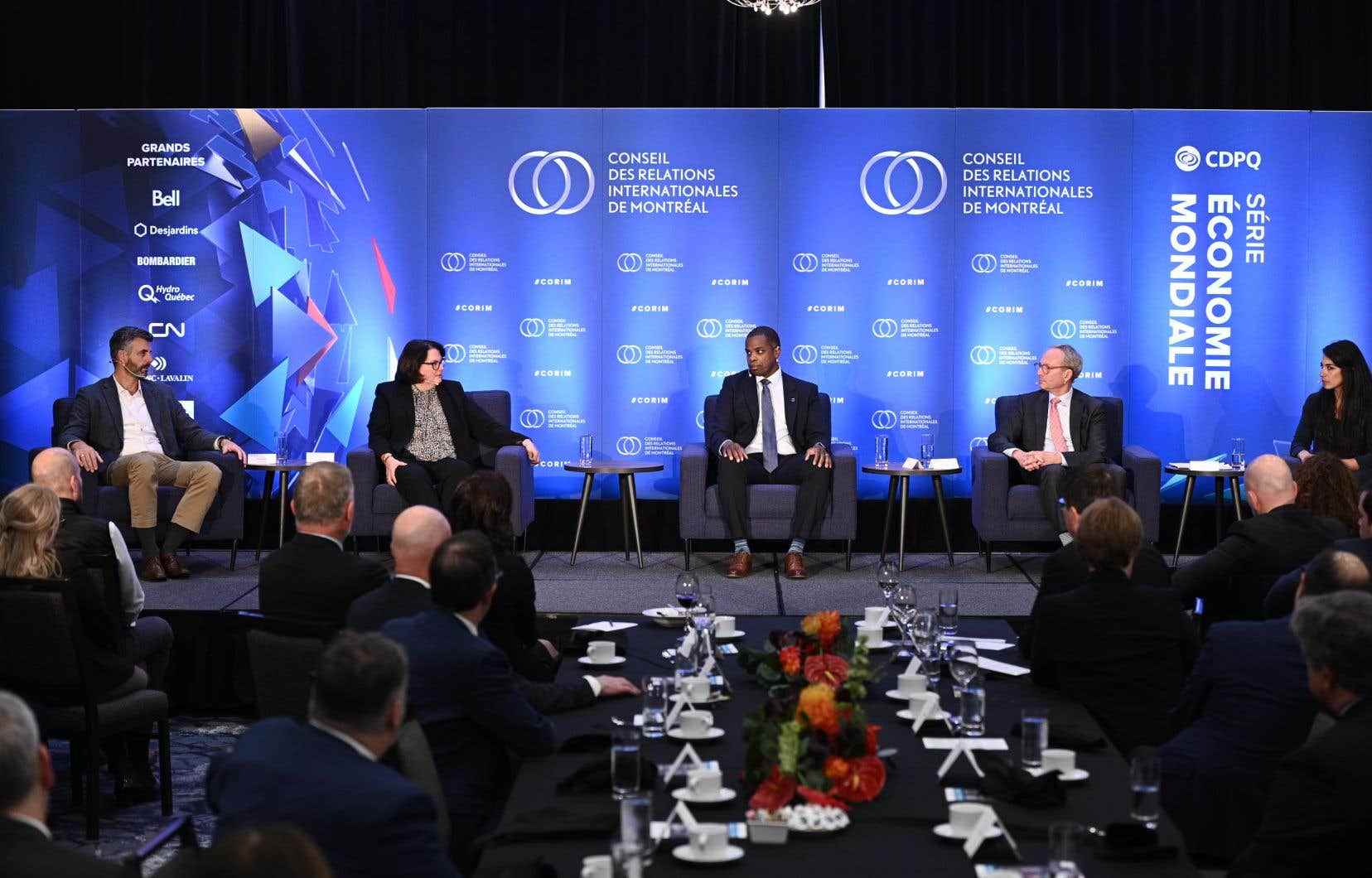Necessary to curb inflation, the radical tightening of monetary policy by central banks nevertheless raises fears of its harmful effects on the economy in the months to come, affirmed the experts gathered on the occasion of a panel organized by the Council on International Relations of Montreal (CORIM) on Thursday.
The economic signals are still orange, but they may soon turn red. Without advancing to give a prognosis on the risk of a recession, the head of economic analysis and global strategy at the Caisse de dépôt et placement du Québec (CDPQ), Martin Coiteux, nevertheless acknowledged that the risks of skidding were great.
“In the last twenty years, we have had low and stable inflation. Today, this is not the case. Are we going to be able to get back to it? I think so, but we will not do it without breaking a certain number of dishes, ”believes Mr. Coiteux.
Desjardins Group’s chief economist, Jimmy Jean, believes that a recession now seems inevitable. “The soft landing, we wanted to believe in it. We gave it a chance, but we threw in the towel over the summer,” he admitted.
Three factors that usually precede a recession have materialized, Mr. Jean pointed out to justify his forecast. “Aggressive monetary tightening, we have them. We often see energy shocks. We experienced it in 2022, prices are still high. We often see the bursting of bubbles. I think that, in the current case, we can speak of the bursting of a real estate bubble. Prices are falling quite quickly. With an average price increase of 50% over two years, in my book, that corresponds to a bubble. »
“Unanchoring” of inflation expectations?
In recent months, the Bank of Canada and the US Federal Reserve have embarked on the path of a tightening of monetary conditions “such as we have not seen for a very, very long time”, underlined Mr. Coiteux, recalling that interest rates started from the bottom at the start of the year and could reach around 4% before the end of the year.
The Bank of Canada was “delayed” in acting, and “this delay must be caught up” to bring inflation back to its target of 2%, believes the expert. “If there has been the perception of a mistake that has been made by waiting too long, you have to manage market expectations,” he adds.
“The big danger is that people start thinking that normal inflation will no longer be 2%, now it will be 3%, or 4%. And there, little by little, people are starting to sign contracts on that basis. This would unanchor inflation expectations. “A scenario that must be avoided at all costs, pleads Mr. Coiteux.
Too strong a lift?
But if raising interest rates is necessary, the Bank of Canada risks “playing with fire” by raising its key rate too quickly, warns Mr. Jean.
He gives the example of households that took out a variable rate mortgage last April. They will have to increase their monthly payment, because they no longer repay all the interest to be paid on the loan.
The great danger is that people start thinking that normal inflation will no longer be 2%, now it will be 3%, or 4%. And there, little by little, people are starting to sign contracts on that basis.
“That’s not to say that it’s the main borrowers, but [ce sont] borrowers who will have to dip into their savings, their income, and cut elsewhere and, in some cases, that can cause insolvency problems,” said Desjardins Group’s chief economist.
Governments, too, will have to adjust to the reality of higher interest rates, adds Mr. Coiteux. An increase in debt service would reduce the budgetary room for maneuver for the health and education missions, warns the man who served as President of the Treasury Board in the Couillard government.
“We have just lived through a long period where money cost nothing. […] Governments must relearn how to come to terms with the idea that a debt costs something. Consequently, we have to make the right choices,” he stressed.
With The Canadian Press
